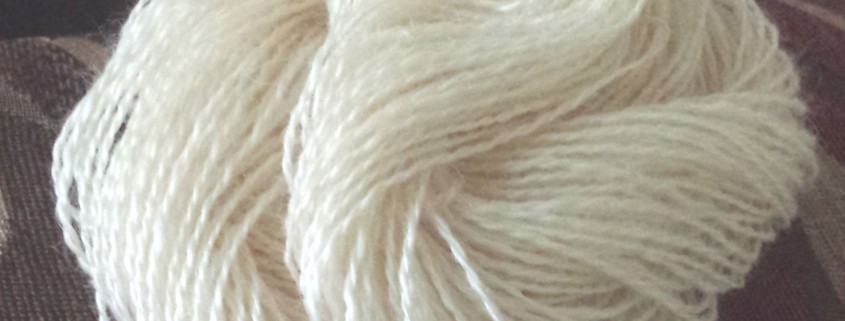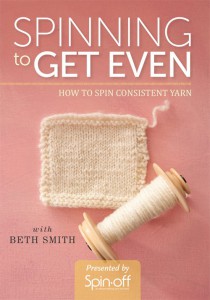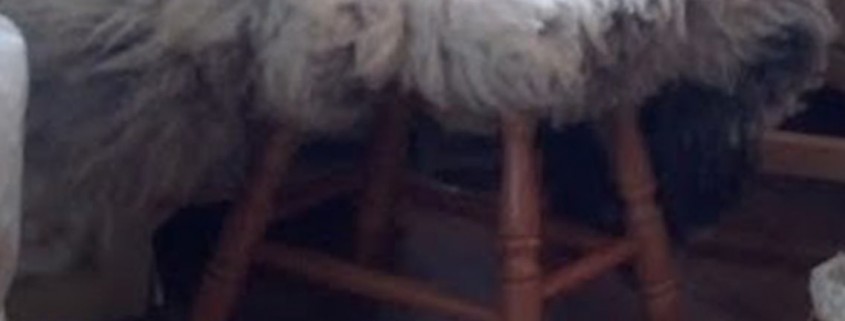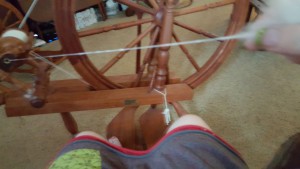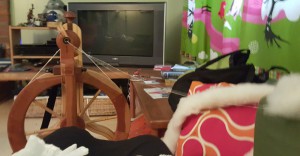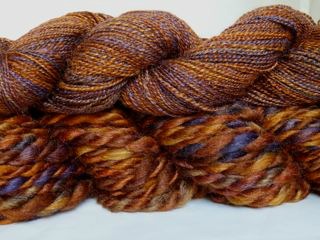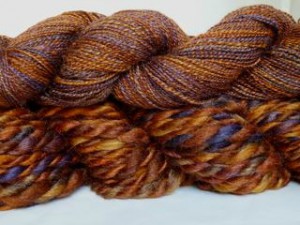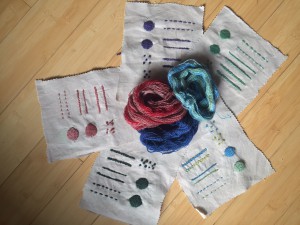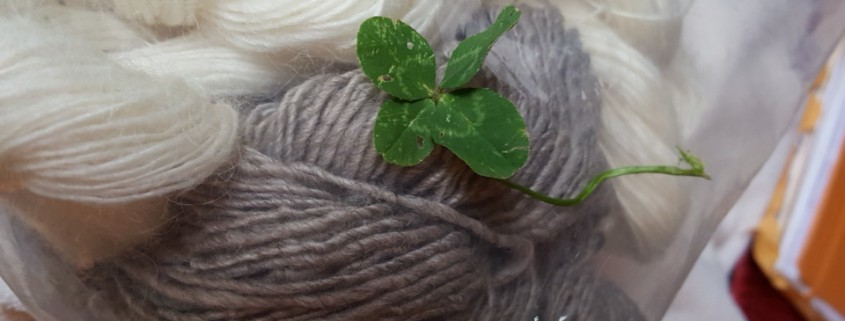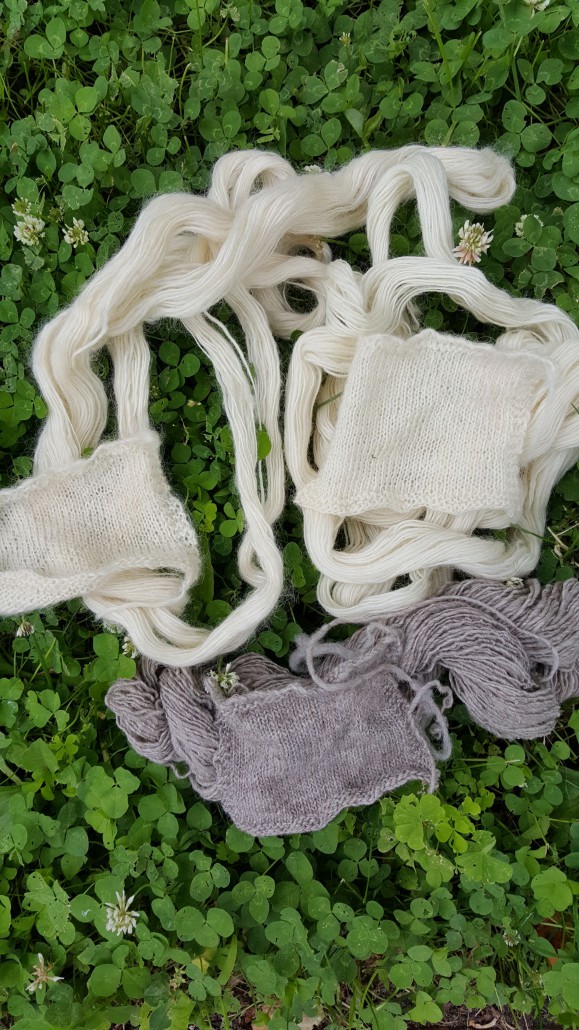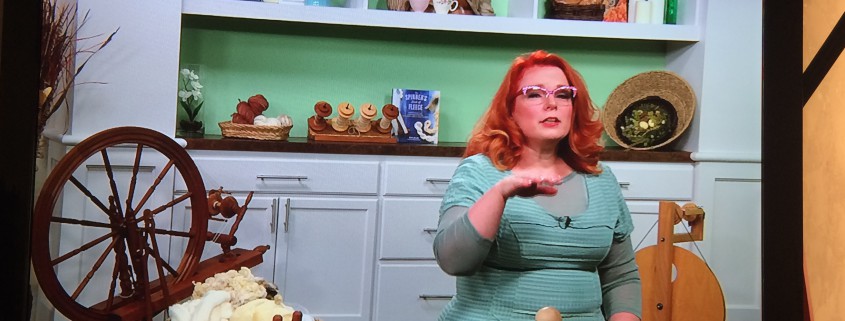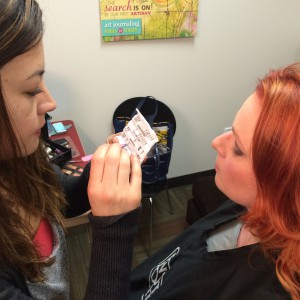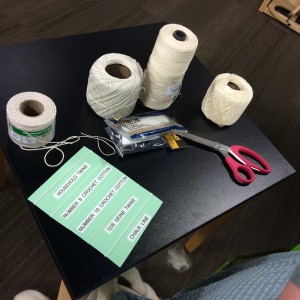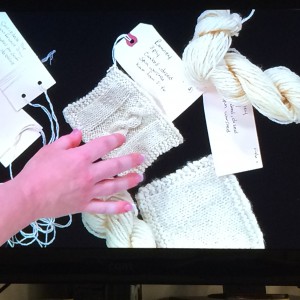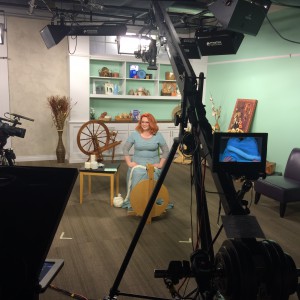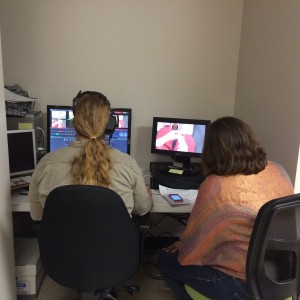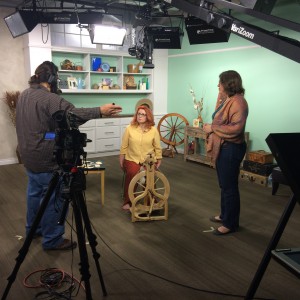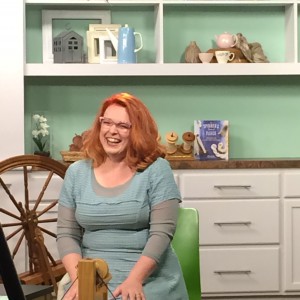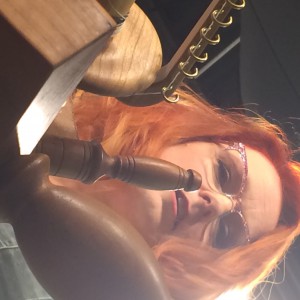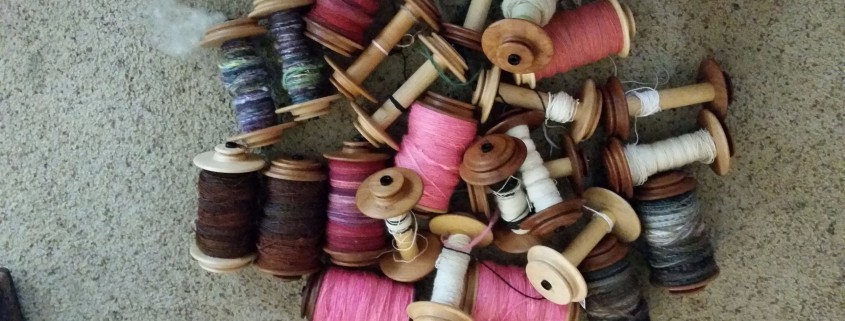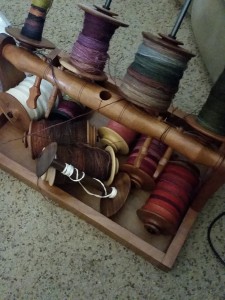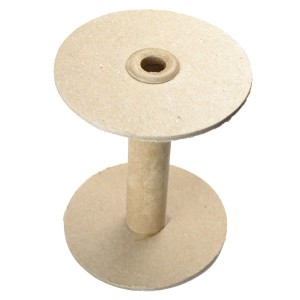Use Your Yarn
I teach a lot of classes and I am always surprised at how many spinners I meet who don’t use their handspun yarns for projects. They give me lots of reasons for it. (1) They don’t think they have enough yarn for a project or (2) they don’t have enough matching skeins or (3) they think their yarn is crappy or (4) they don’t really know how to use it or (5) they sell it.
I have answers for all of this and I hope if you are a person who doesn’t use their hand spun yarn that I can help you change your mind. Let’s go through the reasons one at a time.
Number 1: Not enough yarn for a project. 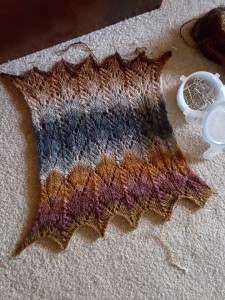
For this problem, if you are a knitter or crocheter, I love Ravelry. If you go to the Patterns section you can search based on yarn size and yardage for projects and you would be amazed at how many projects there are available for small amounts of yarn. I just finished this Lucky Cowl designed by Amy King with a teeny tiny skein.
Number 2: Not enough Matching Skeins
It’s funny how we all have some kind of color scheme that we stick to when we buy fiber. what that means is that most of your fiber will coordinate. It doesn’t need to matche exactly to make a project. In addition, this shawl was made with 3 different thicknesses of yarn. and it worked and it’s warm and I love it. This shawl was made using the Knitting Lace Triangle Shawls book by Evelyn Clark
Number 3: The Yarn isn’t Good Enough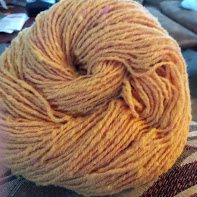
This is a terrible excuse! Here’s the great thing about using your yarn – The lumps get hidden in the fabric or make a nice texture. See the yarn on the right? It’s Columbia, three ply, spun with a long draw which is less consistent than short draw. It also is a roving that has a lot of neps in it so that adds to the texture. I used it for the Hiro 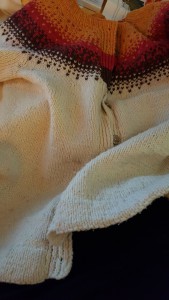 Sweater which was designed by Julia Farwell Clay. But check ouot the finished sweater! All of those lumps disappear!
Sweater which was designed by Julia Farwell Clay. But check ouot the finished sweater! All of those lumps disappear!
I wear this sweater all the time! You can even see the dirt stains in this photo because I don’t want to take it off long enough to clean it. I love it so much I’m thinking of making another one. Probably with lumpy yarn, too.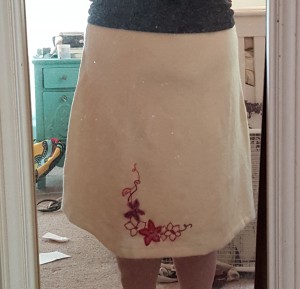
I used the same fiber for a weaving project I’m working on. I made the yarn a bit thinner but it still is not very consistent but I made a beautiful skirt from the woven fabric! (Ignore maggie’s messy room behind me.)
Number 4: Not Sure What to Do With It
This is where sampling or trying things or just swatching comes in. Maybe you need a beginning knitting/crochet/weaving lesson. Maybe you need to find a group of people who are also interested in yarn. Maybe you should pick out a project from a Ply Magazine issue and work on it.Most of us are spinning smooth yarns and the magazine reflects that but there are plenty of articles, the current issue and a couple of issues coming up that will inspire those of you who love textured yarns.
Number 5: Sell The Yarn
Here is where I will climb atop my very tall soap box. And these words go for even those who don’t sell their yarn but aren’t using it. How can you know how to improve your yarn if it isn’t being used in any projects or swatches? How do you know that it even works as intended? Please, please, please! Use your yarn. See how it acts in the fabric. See if it softens or gets more firm. check if the plying is too tight or too loose. Make sure it doesn’t fall apart or begin to pill before the skein is even used up. These things will make you a better spinner.
If you don’t know how to weave/knit/crochet, ask a friend to try some out and give you feedback. You can always use these samples and swatches to help sell future yarns.
Yarn is not a finished object.
What are you working on with your handspun yarn? Let me know!
And the Winner Is!
Thank you so much for all of you who took the time to review the Texture Issue of Ply. The winner of the batts is Christina Bowers!

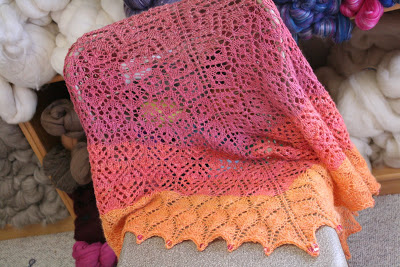
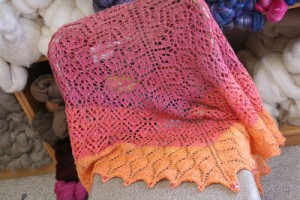

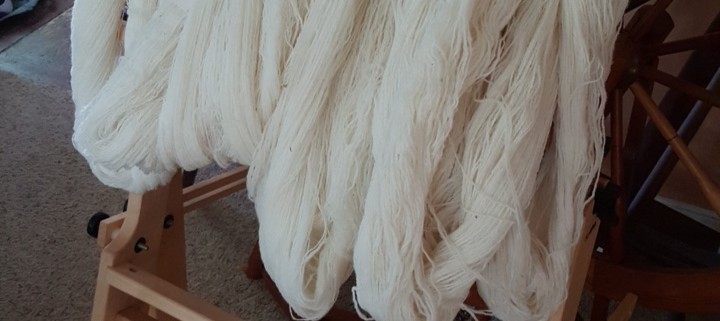
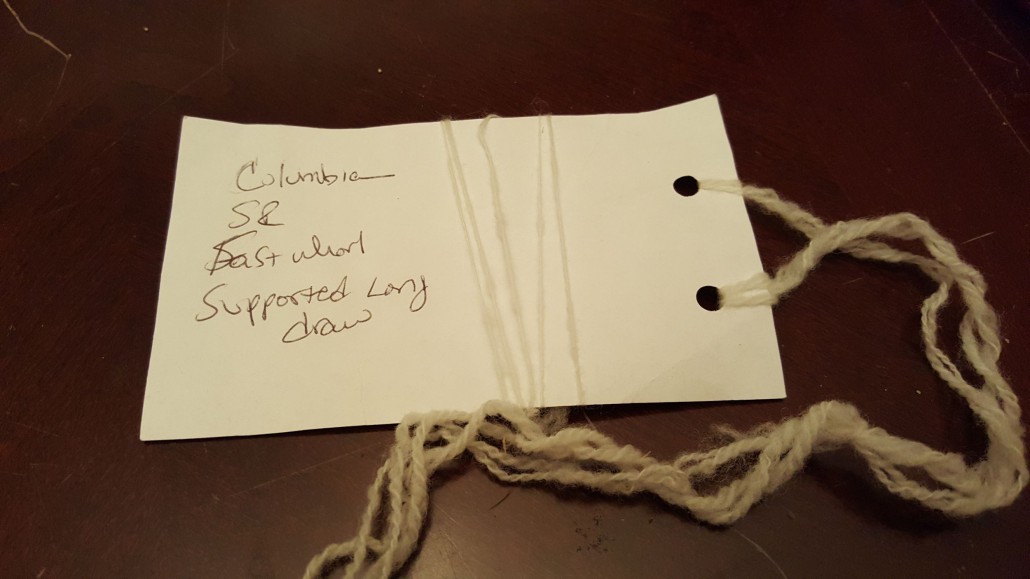
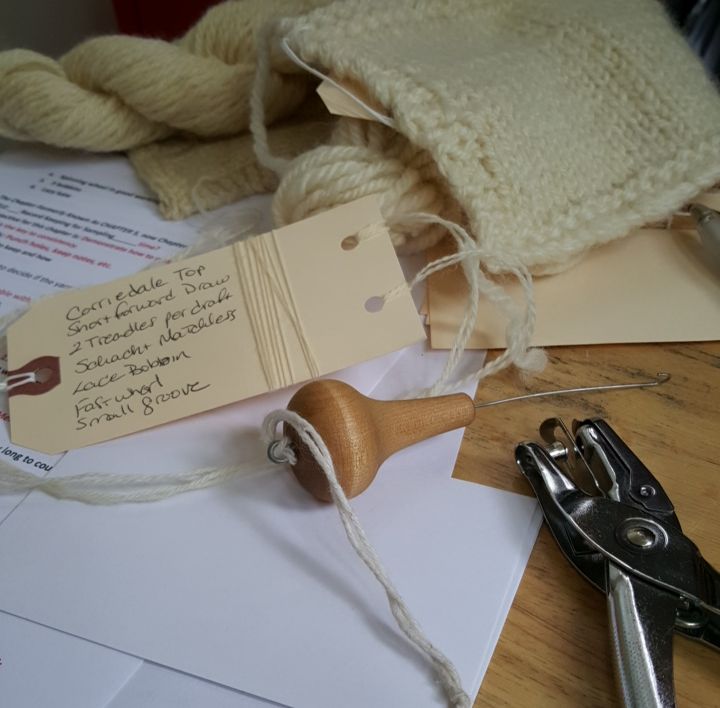 but I neglected to write that. I write the spinning method and often I will add the rhythm I’m using like 12 inch draft to 5 treadles. Again, I didn’t write that here but let me give you a photo of a card I did the right way. This Corriedale project card has all of the information I need to reproduce this yarn. Often I attach it to the swatch or sample I made with the yarn to make sure the yarn would work. All of these samples go into a bag with that breed so I can find them later.
but I neglected to write that. I write the spinning method and often I will add the rhythm I’m using like 12 inch draft to 5 treadles. Again, I didn’t write that here but let me give you a photo of a card I did the right way. This Corriedale project card has all of the information I need to reproduce this yarn. Often I attach it to the swatch or sample I made with the yarn to make sure the yarn would work. All of these samples go into a bag with that breed so I can find them later.